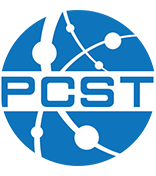Is Science “Awesome”?: Reframing the Use of Awe in Science Communication
Author: Daniel Silva Luna – University of Otago, New Zealand
Co-authors:
- Jesse Bering – University of Otago, New Zealand
Science communicators regularly highlight how science is wonder-filled and awe-inspiring. Implicit to this framing is that emotions such as ‘awe’ are evoked whenever the audience is confronted with an overwhelming scientific object or idea that challenges their previously held views. This ‘awe’ inducement then presumably motivates curiosity. Because many scientists are driven by curiosity, and their outputs challenge people’s understanding, some commentators have argued that ‘awe’ plays a special role in science and its effective communication.
Within the contemporary affective literature, however, the nature of emotions is the subject of intense debate, and these disagreements have both practical and theoretical implications for how the emotion category ‘awe’ is being utilized by science communicators. For example, although many affective researchers see ‘awe’ as an innate emotion that served adaptive functions in the evolutionary past (e.g., social submission), recent work in affective science calls this view into question. In particular, Barrett’s theory of constructed emotions contends that all emotions, including ‘awe’, are culturally-relative constructions learned through a lifetime of interaction with the respective emotion categories.
Following Barrett, I argue that people learn to a certain degree to experience ‘awe’ in their interaction with science communication. This means that science is not inherently awesome, but rather is made awesome as the result of being so frequently tethered to awe-related language and visual rhetoric. In other words, people’s experiences of ‘awe’ are held together by our communicative practices.
In support of this claim, I present the results of a word-association task that compared how awe is conceptually represented by those who regularly consume science communication to those who do not. In addition, I discuss out a new research program that can trace how emotions are being used to communicate science, with the goal of better understanding the public’s affective relationship to the subject.
The author has not yet submitted a copy of the full paper.
Presentation type: Insight talk
Theme: Transformation
